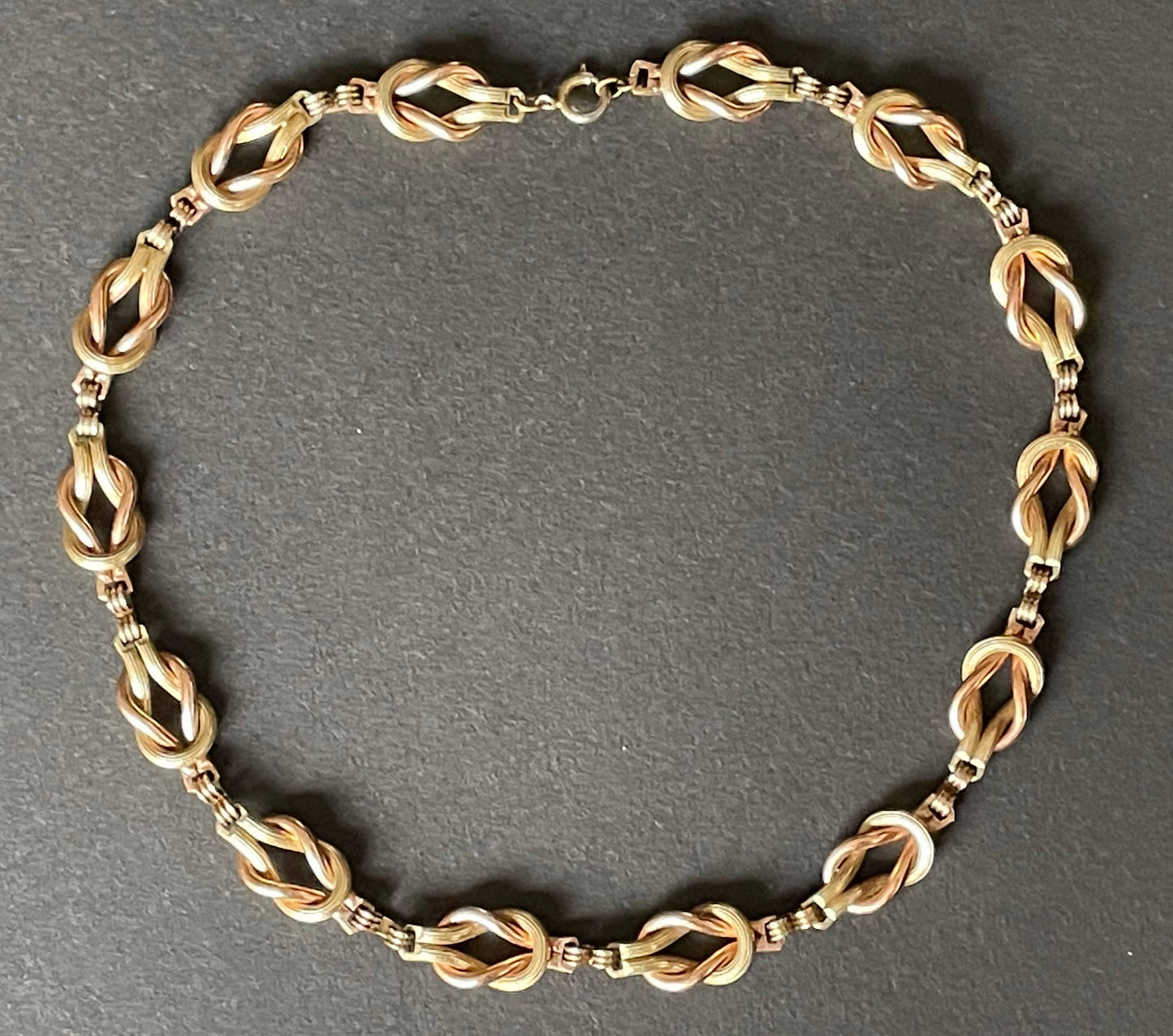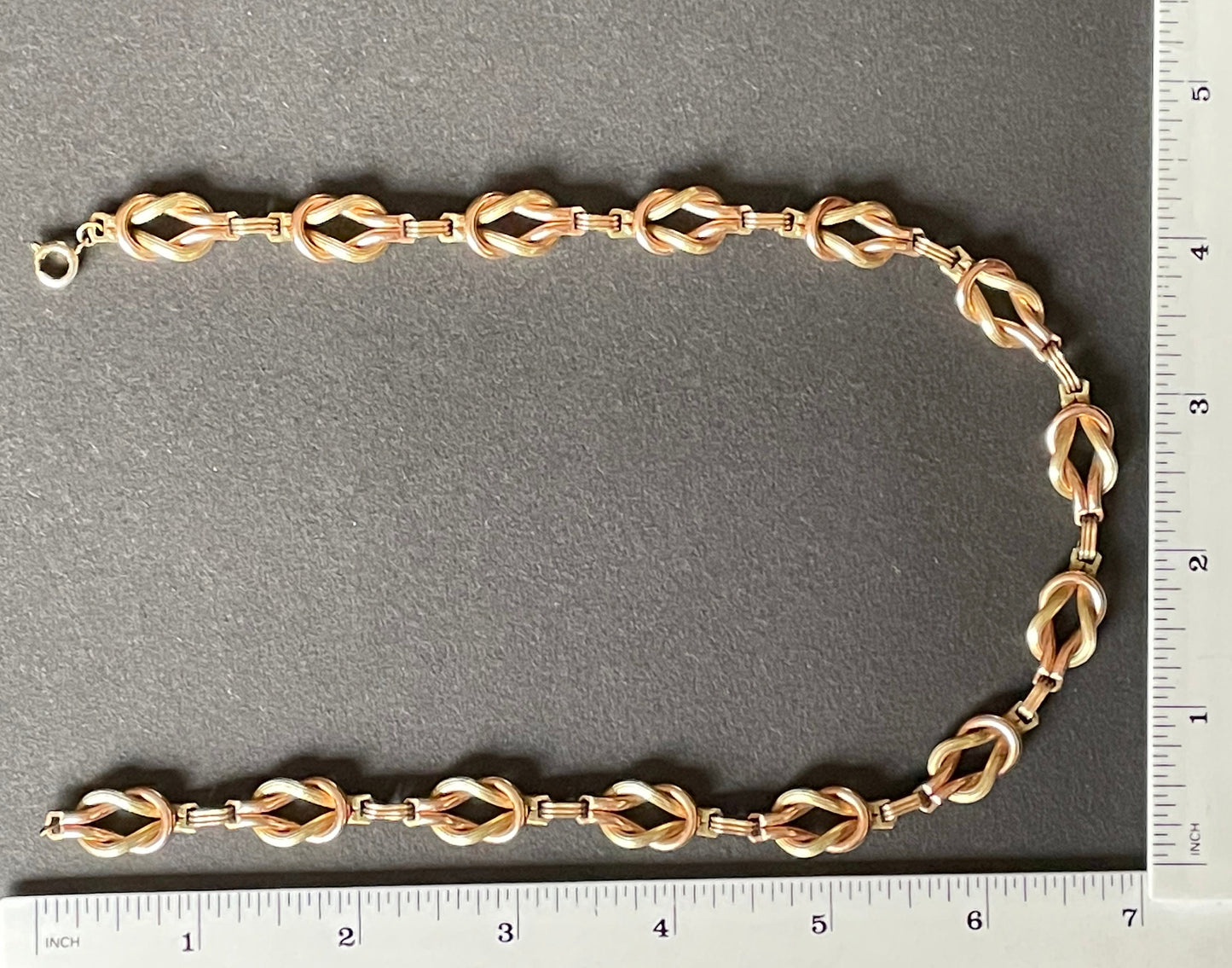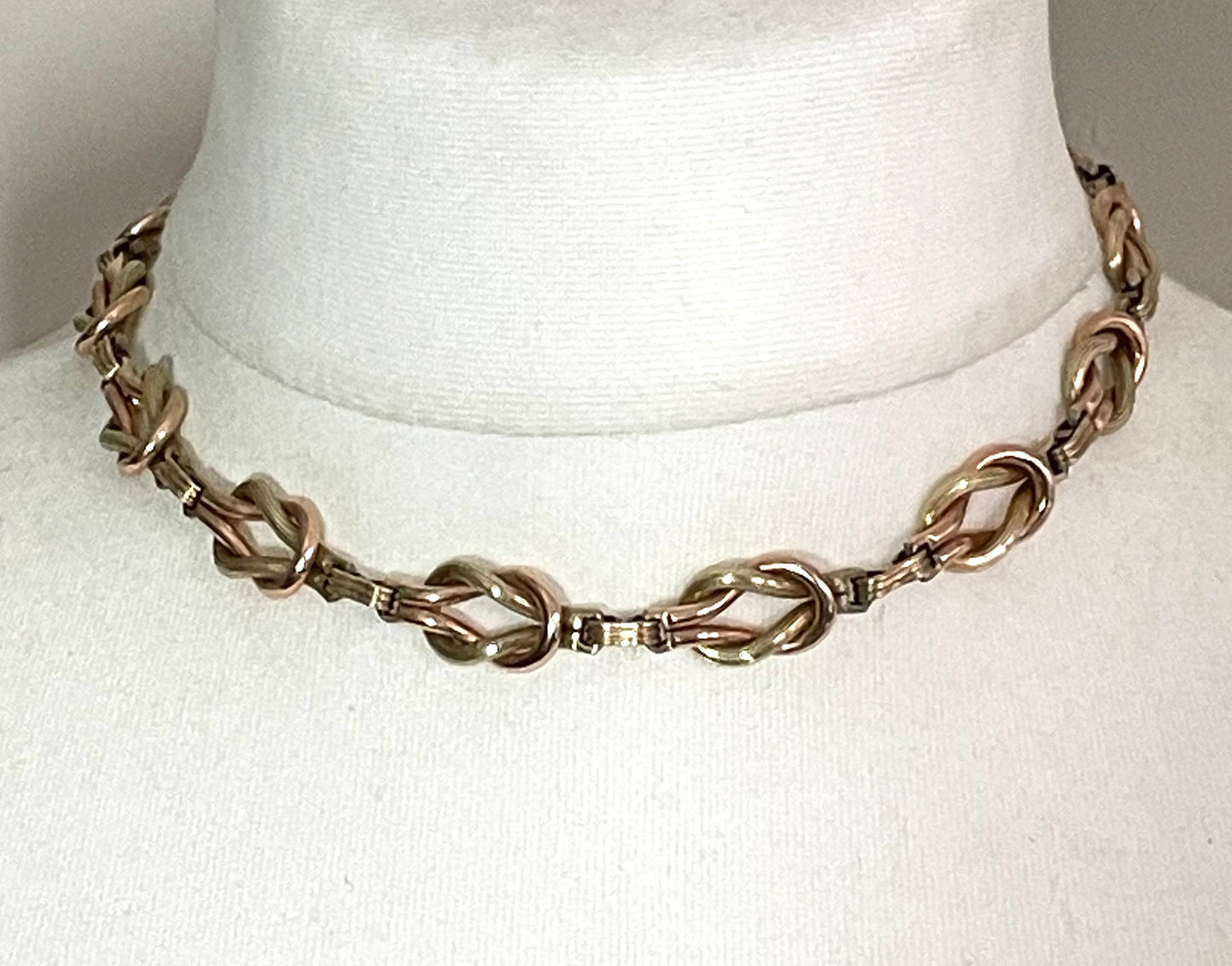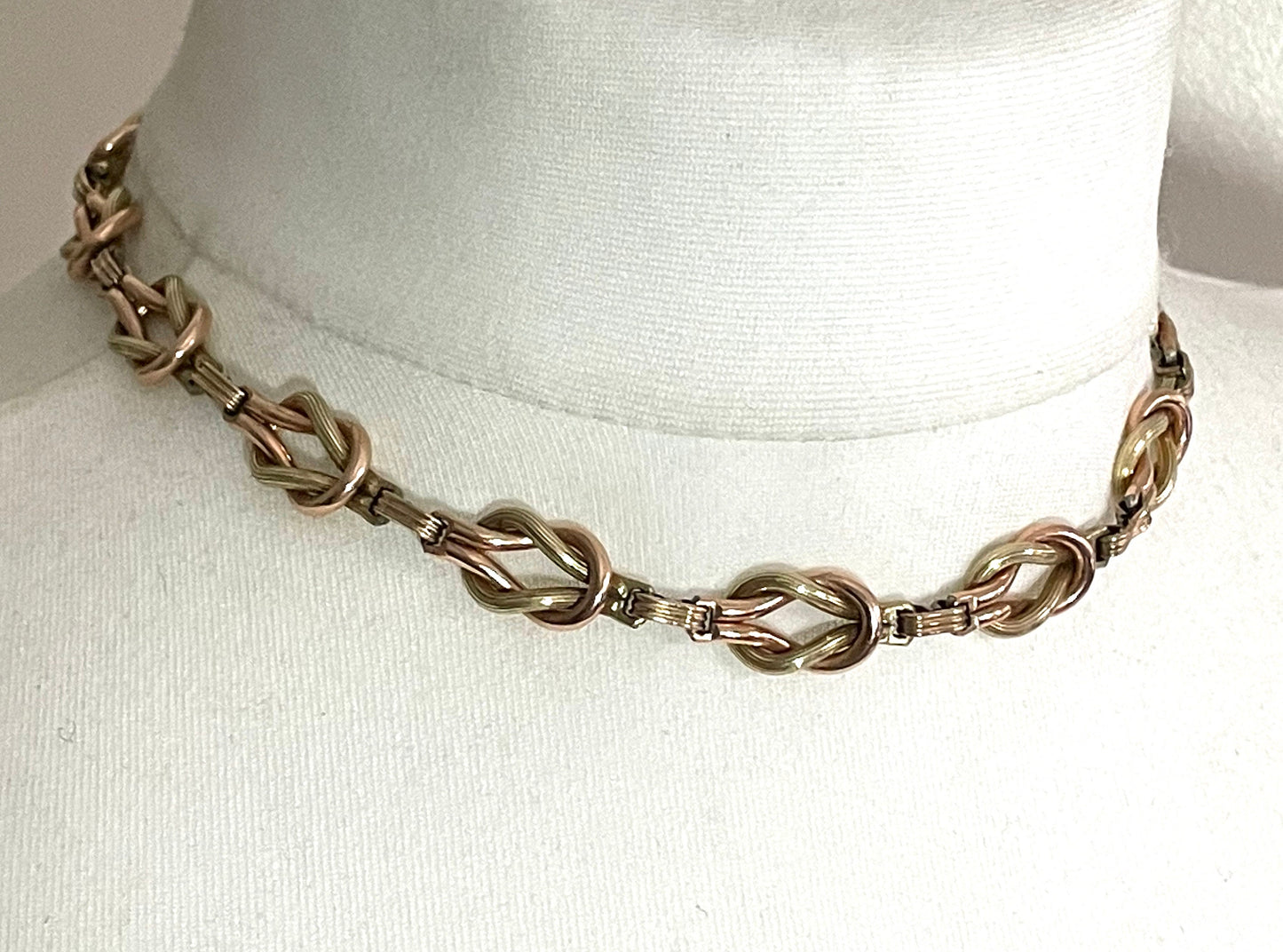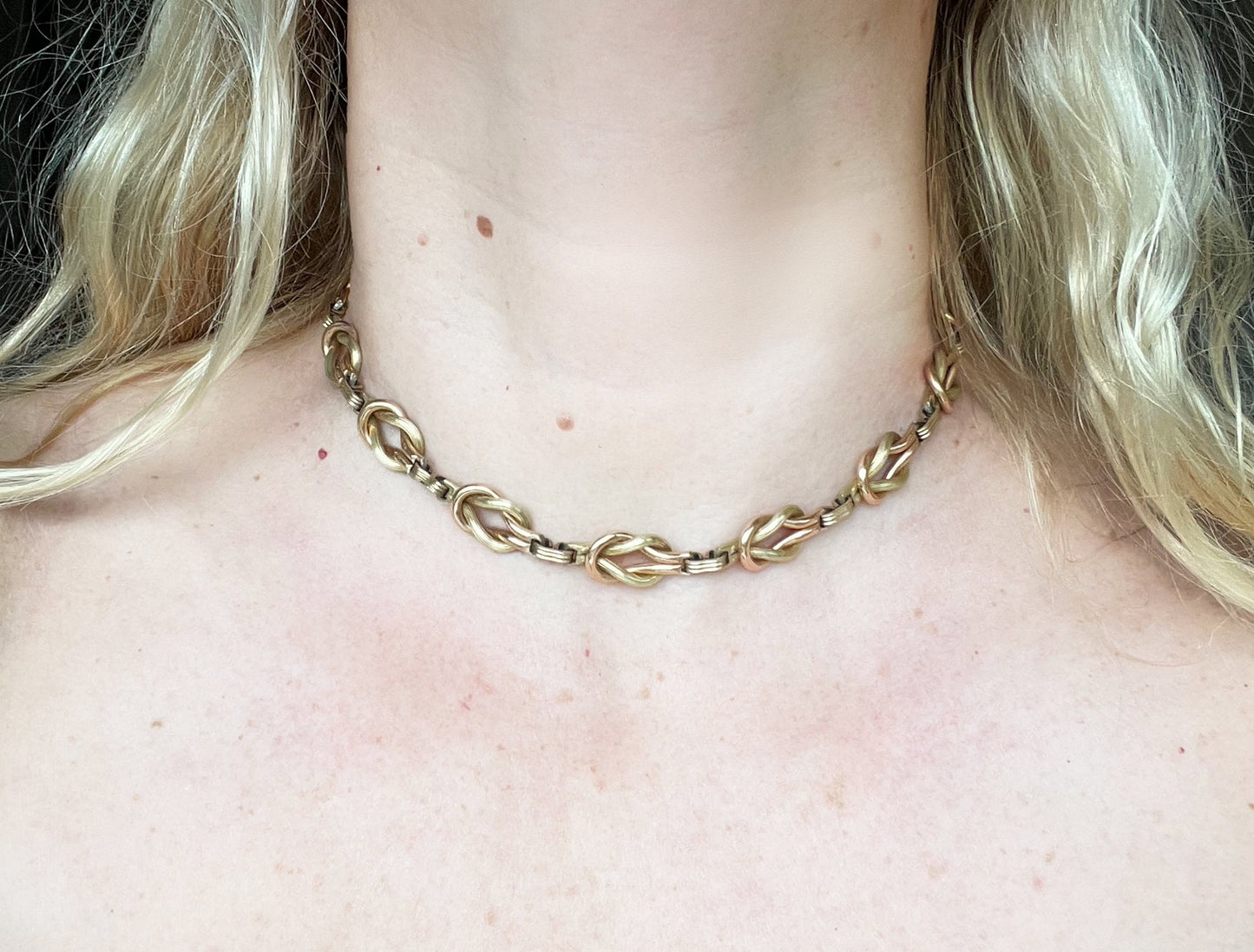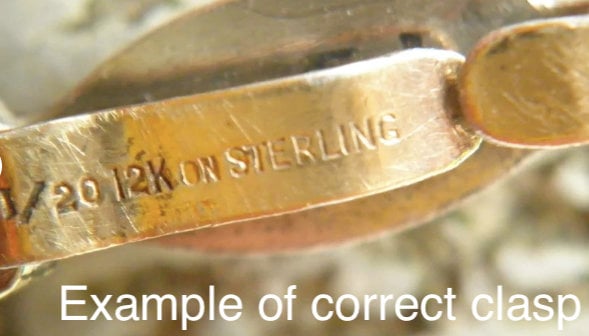My Store
Vintage Art Deco reef knot necklace bi-colour 1/20 12K yellow / green and rose gold filled sterling silver, by GW in the 1930s
Vintage Art Deco reef knot necklace bi-colour 1/20 12K yellow / green and rose gold filled sterling silver, by GW in the 1930s
Couldn't load pickup availability
Fabulous Art Deco architectural interlinked reef knot collar necklace from the 1930s possibly from a company or maker with initials 'GW'. It took me a while to identify this and the fact that the links are made from 1/20 12K gold filled sterling silver, as the original clasp has been replaced with a spring ring clasp. I have found pictures of what would have been the original clasp (example as last photo). It would have been an old clip clasp, stamped with '1/20 12K on sterling' showing that the yellow gold (or perhaps 'green' gold as it is sometimes called) and rose gold on alternating links is 12 carat gold filled over sterling silver.
The yellow gold knots and links have a nice ridged texture as well. The other examples sold or being listed online say that the maker's initials are 'GW' for GW products. This piece is really striking - an absolutely stunning example of machine age Art Deco style. It is heavy and you can feel the quality when you handle it. It is in very good vintage condition, though the clasp has been replaced as discussed above.
Found in Celtic artwork, ancient Egyptian sculptures and ancient Greek jewellery, the association of knots with love and friendship has appeared in many different cultures throughout history. In the 19th century, sailors would wear a love knot bracelet woven out of rope as a reminder of their loved ones when they were away from home, which also acted as a talisman to keep them safe while at sea. By the time the Victorian era came around, the knot was already well established as a decorative motif. This romantic period of jewellery design saw sentimental motifs flourish, driven by Queen Victoria’s own love of jewellery imbued with meaning. This tradition of knot motifs continued through the Edwardian and Art Deco period through the 20th century to today.



